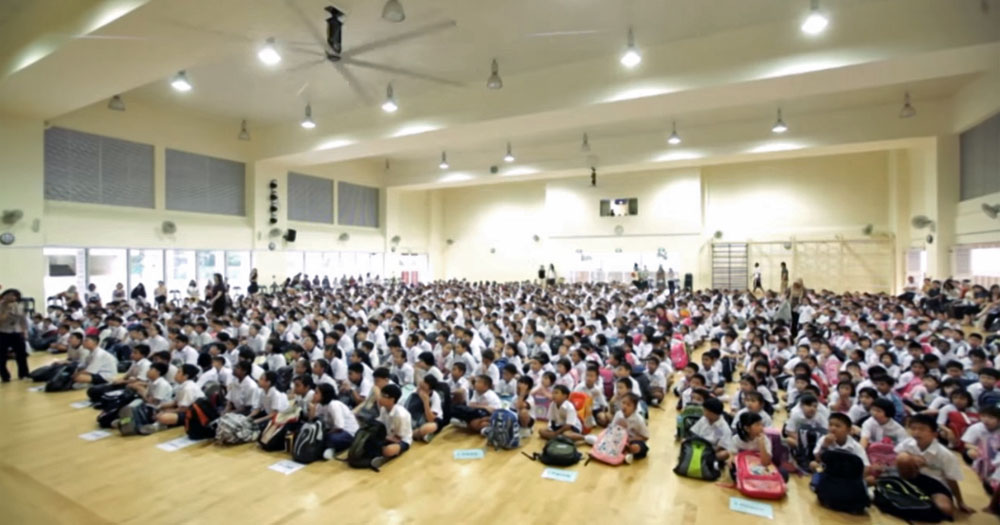The Primary School Leaving Examination (PSLE) was introduced in 1960.
It was announced by then Minister for Education Yong Nyuk Lin and was the first national examination to be established in Singapore.
Exams for cohesion
It was a time where more than three-quarters of the population was Chinese, but half of the population was in an English-stream school.
On the other hand, Malay was accepted to be the national language of the state.
With the unique scenario of having to balance four language streams, the PSLE was established as a way to unite the different ethnic groups and ultimately promote loyalty to the state.
Bet you didn't know that.
PSLE's predecessors
Before the implementation of PSLE, the secondary entrance examinations were conducted differently by different schools, depending on the language medium.
The Common Standard VI Entrance Examination was introduced in 1952, following the expansion of English-stream primary education after World War II.
It was later renamed the Secondary School Entrance Examination, and was used until 1959.
Not standardised due to different languages
The Chinese-stream primary schools already used an annual common examination for final-year students since 1935. However, the examination was discontinued in 1951 and there was no replacement.
In 1959, a common secondary school entrance examination was introduced for Malay-stream primary school, in preparation for the introduction of the first Malay-stream secondary classes.
For Tamil-stream students aspiring to go to secondary school, they had to take the Federation of Malaya Standard VII (Tamil) examination instead, as there was no separate examination offered in Singapore due to the small candidature.
Thus, the PSLE system served to standardise the various education systems and unite the different ethnic groups through a common syllabus.
The first-ever PSLE in 1960
The first PSLE was held from Nov. 2 to Nov. 4, 1960, with a total of 30,615 candidates.
In total, 13,736 candidates passed and were posted to secondary schools, while the rest of the candidates were sorted into different groups based on their performance and age.
This put the passing rate at 44.9 percent.
Borderline passes
The first group consisted of 3,042 students who were considered borderline cases. These students were placed in two years of special intensive classes before they were allowed to take the Secondary Two examinations.
Those who passed were promoted to regular Secondary Three classes, while the rest were expelled from the education system.
Repeat Primary Six
The second group of 8,043 students had to repeat Primary Six and retake the PSLE in following year. They were mostly under the age of 13, and were allowed to retake the examination.
Too old to be in primary school
The third group, which comprised of 5,388 students, were deemed too old to remain in Primary school were placed in post-primary classes for two years of vocational education.
School leavers for good
The final group of 406 students had to leave school as they were above the age of 16 and had failed badly in the PSLE.
PSLE throughout the years
In 1961, students from private schools were allowed to take the PSLE.
In 1978, then Deputy Prime Minister Goh Keng Swee led a team to study the problems in Singapore's education system.
Under the team's recommendations, the New Education System (NES) was formed, where PSLE results will be used to stream students into Special, Express or Normal courses in secondary schools from 1980 onwards.
In 2003, primary school education was made compulsory in Singapore.
In 2012, the tradition of naming the top PSLE scorers was stopped, in order to de-emphasise academic achievements.
Upcoming changes
In 2021, there will be major changes to the PSLE scoring system, as part of a shift away from excessive emphasis on academic results.
Currently, a pupil's PSLE aggregate is the sum of the T-scores of all the four subjects he took. This indicates how well a student has done relative to his peers.
With the new changes, PSLE subjects will be graded according to eight Achievement Levels (AL). Those who performed at a similar level will be grouped in the same AL band.
This is meant to curb over-competitiveness as the new scoring system grades a student based on the on individual performance, regardless of how the cohort performs.
[related_story]
PSLE here to stay?
Despite these impending changes, critics have called for the outright removal of the PSLE, citing the need for more drastic changes in order to reduce the unhealthy obsession with academic competition.
It has been argued that many countries around the world do not possess such high-stakes sorting examinations at the age of 12.
However, there has been no plans to abolish PSLE just yet.
A common counter-argument to the abolishment of PSLE is that the examination serves as a transparent and objective way to sort students in secondary schools, as the alternative of allocation based on residential location will be considered unfair.
If you like what you read, follow us on Facebook, Instagram, Twitter and Telegram to get the latest updates.
